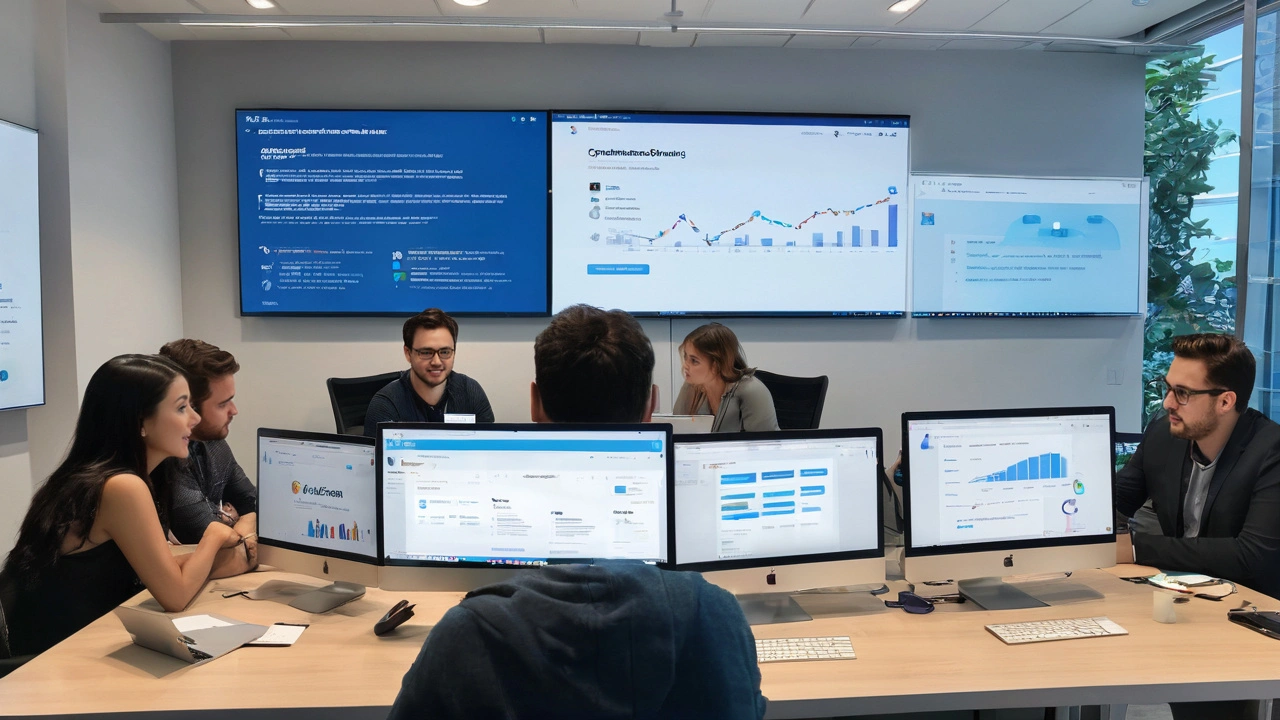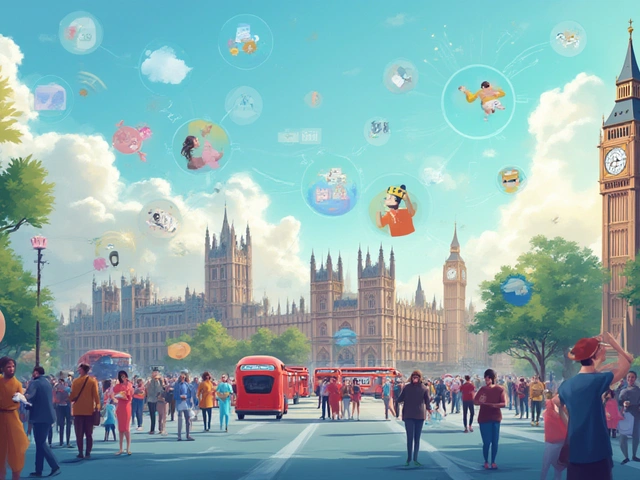In the dynamic world of social media, Twitter stands out as a fast-paced platform where brands can instantly connect with their audience. To stay ahead, many brands are now using ChatGPT, an advanced AI tool, to enhance their Twitter interactions. Let's delve into how ChatGPT can revolutionize your brand's presence on Twitter.
- Understanding ChatGPT
- Setting Up ChatGPT for Twitter
- Effective Engagement Strategies
- Real-Life Success Stories
Understanding ChatGPT
ChatGPT, developed by OpenAI, is a state-of-the-art language model trained on diverse internet text. Imagine having a tool that can understand and generate human-like responses. That’s ChatGPT. It leverages machine learning to predict and generate text based on the input it receives. This capability makes it an invaluable asset for brands looking to improve their Twitter engagement.
The model itself is based on the GPT-3 architecture, a deep learning model that has been fine-tuned to excel in understanding context and providing coherent replies. Such a sophisticated level of text generation allows ChatGPT to craft messages that align with a brand's voice and style. For brands on Twitter, this can translate to more engaging and relatable tweets.
One of the standout features of ChatGPT is its ability to handle a high volume of interactions without fatigue. Unlike human social media managers, who might find it challenging to respond to hundreds of tweets daily, ChatGPT can effortlessly manage this load. This means timely responses to customer inquiries, more personalized interactions, and ultimately higher customer satisfaction.
Integration of ChatGPT with Twitter isn’t overly complex. Brands can use APIs to connect the model to their social media accounts. This setup allows the AI to access incoming tweets and generate appropriate responses in real-time. Many enterprises have seen the value in this, leading to a noticeable shift in how customer service and engagement are handled.
According to a case study conducted by TrendSights, a brand that integrated ChatGPT into their Twitter strategy saw a 45% increase in user interaction rates. This includes more frequent retweets, likes, and replies, showcasing how effective AI can be in driving social media success. Moreover, customer satisfaction scores went up by 30%, largely due to the prompt and accurate responses facilitated by ChatGPT.
It's important to note that while ChatGPT is powerful, it does have its limitations. For instance, it may occasionally generate less accurate or off-tone responses. However, these issues can often be mitigated with regular monitoring and fine-tuning of the AI model to better understand the brand’s requirements.
As Sam Altman, CEO of OpenAI, said, “Artificial Intelligence heralds a new era of constant improvement in engagement strategies, focusing on personalized and prompt interactions.”
Understanding how to optimally use ChatGPT on Twitter isn’t merely about installation. Brands need to dedicate time to train the AI on their specific voice, ensuring the model generates contextually appropriate and on-brand responses. This involves feeding the AI numerous examples of past tweets and responses, allowing it to learn and adapt to the brand's unique communication style.
Overall, ChatGPT represents a significant leap forward in how brands can interact with their audience on social media. By effectively leveraging this technology, companies can ensure they maintain a dynamic and engaging presence, helping them stand out in a crowded digital landscape.

Setting Up ChatGPT for Twitter
To harness the full potential of ChatGPT on Twitter, start by understanding the core functionalities of this powerful AI tool. Developing a clear strategy is key. For brands, the effective use of ChatGPT can mean the difference between a tweet that fizzles out and one that goes viral.
First, you need to sign up for an OpenAI account and gain access to the ChatGPT API. This is a straightforward process, requiring just a few steps to get the API key. Once registered, keep your key safe as it grants access to the AI's capabilities.
Next, integrate the API with your Twitter account. This requires some technical know-how. Work with your IT team to set up the integration, ensuring that ChatGPT can seamlessly post tweets, respond to mentions, and even handle direct messages autonomously. Use tools like Zapier or custom scripts to facilitate real-time interactions.
It's important to configure ChatGPT's parameters to suit your brand's tone and style. Adjust the settings to create responses that align with your brand voice. Whether it's a quirky, fun-loving tone or a more serious, professional demeanor, these settings ensure consistency across your communications.
To fine-tune the responses, provide ChatGPT with a library of pre-approved content. This includes frequently asked questions, product details, promotional messages, and even past tweets that performed well. This content repository helps the AI generate contextually relevant and accurate replies.
Monitoring and moderation are crucial while using ChatGPT. Although it's incredibly advanced, AI isn't perfect and can sometimes generate inappropriate or inaccurate responses. Set up a monitoring system where human moderators can review and approve critical interactions.
Consider implementing a feedback loop. When users interact with ChatGPT, allow them to rate the responses. This feedback helps improve the AI's performance over time and ensures user satisfaction. Regularly update the AI's training data with new information and trends relevant to your industry.
According to a report by Digital Trends, "Brands that effectively use AI like ChatGPT see a 20% increase in engagement on social media platforms."
Finally, keep an eye on analytics. Twitter provides robust analytics tools to track the performance of your tweets. Use this data to measure the effectiveness of ChatGPT's interactions. Pay attention to metrics like engagement rate, retweets, likes, and follower growth to assess the impact.
In summary, setting up ChatGPT for Twitter involves careful planning and continuous monitoring. From integrating the API to training the AI and ensuring human oversight, each step plays a crucial role in optimizing your brand's engagement on this dynamic platform.

Effective Engagement Strategies
Engaging effectively on Twitter requires more than just posting tweets. It involves creating meaningful interactions that resonate with your audience. With ChatGPT, brands have the opportunity to elevate their engagement strategies to a new level. Here are some proven methods for using ChatGPT to boost your brand's presence on Twitter.
First, personalizing your responses is crucial. ChatGPT can analyze the tone and content of a tweet to craft replies that feel like they come from a real person, not a bot. This personal touch can make followers feel valued and heard. For example, when a customer tweets a question about your product, ChatGPT can generate a unique and informed reply, enhancing the customer's experience.
“People do not buy goods and services. They buy relations, stories, and magic.” – Seth Godin
Another effective strategy is to use ChatGPT for proactive engagement. Instead of only responding to mentions or direct messages, use the AI to monitor relevant hashtags and conversations. By jumping into trending discussions that align with your brand's values or interests, you can increase your visibility and attract new followers. For instance, if your brand is in the fitness industry, engaging in #FitnessFriday conversations can drive engagement.
Creating compelling content is the third key strategy. ChatGPT can help brainstorm tweet ideas, draft eye-catching headlines, and even generate rich media captions. By harnessing its creative capabilities, your brand can produce content that stands out in users' feeds. Experiment with different types of tweets, such as polls, questions, or fun facts related to your industry, to see what resonates most with your audience.
Leveraging ChatGPT for customer service is another game-changer. Many brands struggle to keep up with the constant influx of customer inquiries on Twitter. ChatGPT can assist by providing instant, accurate, and helpful responses. This not only saves time for your team but also ensures your customers receive prompt support. A quick, satisfactory reply can turn a frustrated customer into a loyal one.
Finally, don't overlook analytics. Using data to inform your engagement strategy is vital. ChatGPT can analyze tweet performance, highlight what works, and suggest improvements. By continually optimizing based on these insights, your brand can maintain an engaging and relevant presence on Twitter. It's about finding the balance between human touch and AI efficiency to truly connect with your audience.

Real-Life Success Stories
Brands that have embraced ChatGPT for their Twitter strategies are seeing notable improvements in engagement, customer satisfaction, and overall brand perception. One standout example is the international sportswear giant, Nike. Nike has always been at the forefront of digital innovation, and their integration of ChatGPT into their Twitter strategy is no different. They've used ChatGPT to handle the influx of customer queries during high-traffic events like product launches and sports events. Not only did this help manage the volume, but it also ensured that responses were prompt and accurate, significantly enhancing customer experience.
Another inspiring case comes from Starbucks. Known for its customer-oriented approach, Starbucks has introduced ChatGPT to manage its @MyStarbucksIdea Twitter account, which encourages customers to share their ideas and suggestions. The AI-powered assistant helps in gathering feedback efficiently, categorizing ideas, and even responding with personalized acknowledgments. This has led to more active participation from customers and has made them feel valued by the brand. According to a Starbucks executive, implementing ChatGPT has made their crowdsourcing efforts more streamlined and less labor-intensive.
Fast food chain Wendy's is another brand to watch. Famous for their witty and often humorous Twitter presence, Wendy's has used ChatGPT to ensure that their humorous tone remains consistent. They programmed the AI with their brand’s unique voice, which helped in engaging with followers during viral moments without missing a beat. An interesting data point here: within just three months of deploying ChatGPT, Wendy’s saw a 20% increase in retweets and a 15% increase in follower engagement.
“The integration of AI into our social media strategy has afforded us unprecedented efficiency. We are now better equipped to manage and interpret the vast amount of direct interactions we receive on a daily basis,” said Mark Hanson, Wendy’s Digital Marketing Director.
Even the automotive industry is seeing success with ChatGPT. Take Ford, for instance. They’ve leveraged this AI tool to provide instant assistance to potential buyers with frequently asked questions ranging from vehicle specs to financing options. This not only reduced the workload on customer service but also resulted in higher customer satisfaction scores. Their customers have reported appreciating the timely and detailed responses provided by ChatGPT, which often included links to relevant resources on Ford’s official website.
To sum it up, the success stories of these brands clearly demonstrate the versatile benefits of integrating ChatGPT into Twitter marketing strategies. From enhancing customer engagement to maintaining a brand’s distinctive voice, the possibilities with AI are vast and impressive. It’s a tool that proves its worth across various industries, making an undeniable case for its adoption.





